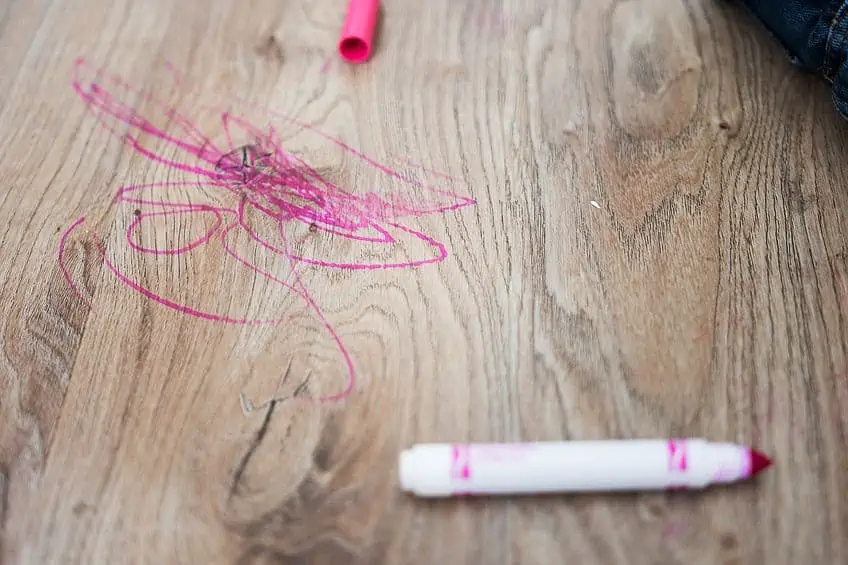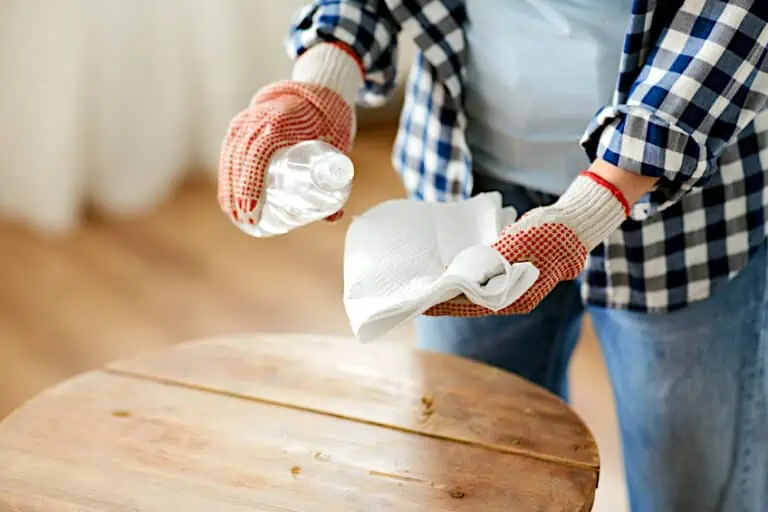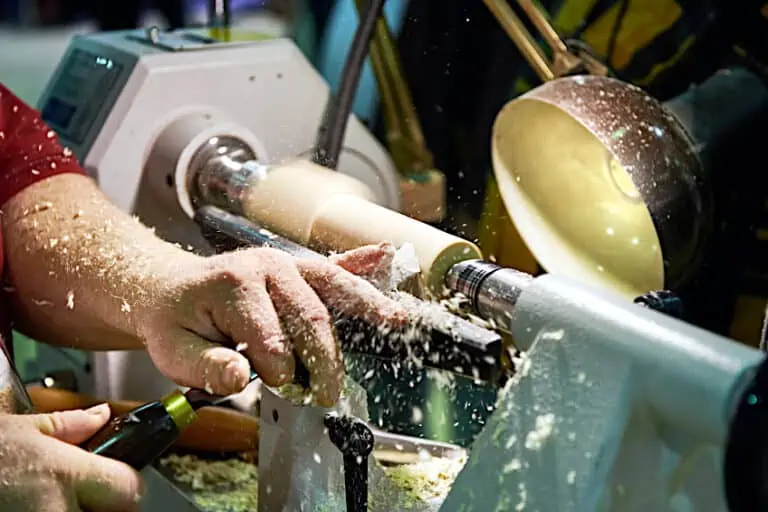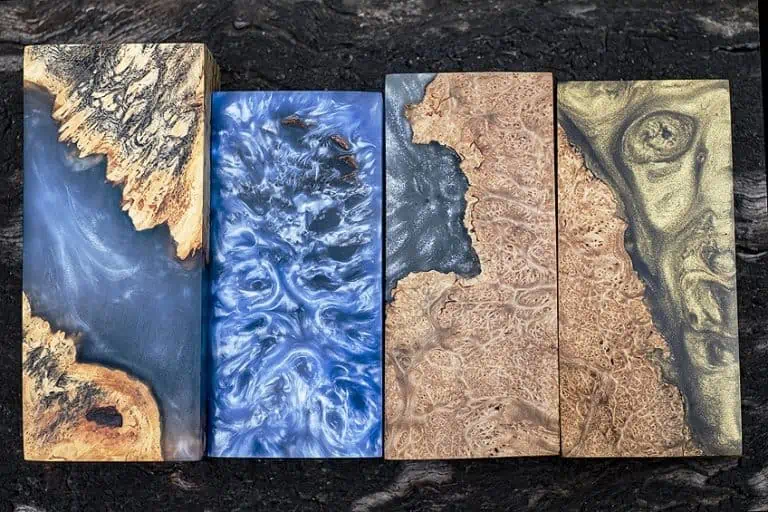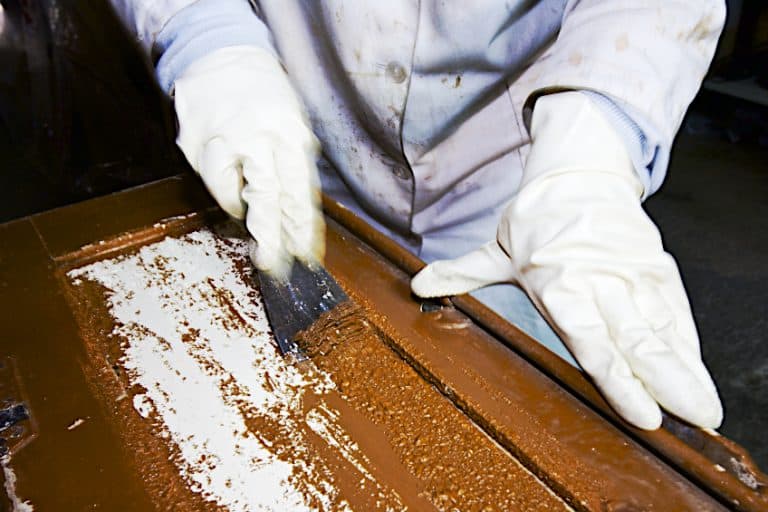How to Remove Permanent Marker from Wood – An Instructional Guide
Each one of us most likely has a permanent marker lying somewhere around the house. Whether you use the permanent marker, or your kids get hold of it, you might find yourself sitting with marks on your wood or other surfaces. Thankfully, there are a few methods that can help you to remove permanent marker from wood. So, before you think all is lost and your wooden table will never look the same again, read further to discover how to remove permanent marker from wood.
What Are Permanent and Non-Permanent Markers?
A permanent marker is a pen you can use to write on many different surfaces, including wood. The ink inside the marker is made up of three main ingredients, being your color, resin, and a solvent. The colorant can either be a pigment or dye (a dye is water-soluble whereas a pigment is less soluble in water), and a solvent is necessary to carry the color. In most cases, a pigment will be used for a permanent marker.
The solvent is the cause of a higher volatile organic compound (VOC) count, which results in a strong odor in most permanent markers. The resin helps the pigment adhere to the surface, while the solvent evaporates and, in the case of a permanent marker, it is not soluble in water. Permanent markers come in different tip sizes as well as shapes, and there are also different colors available. Non-permanent markers, on the other hand, are pens that are water-based, made with a water-soluble resin.
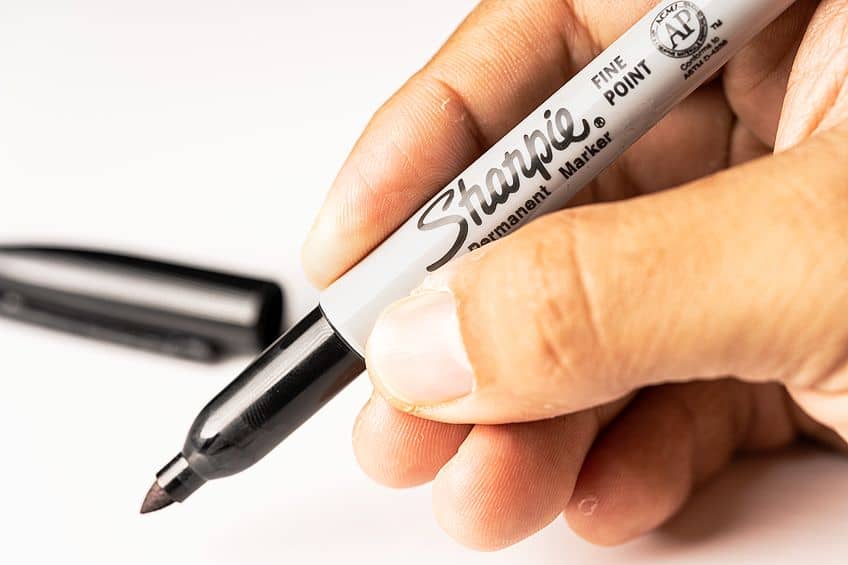
The word “permanent” can be seen as somewhat of a contradiction, as while many markers are labeled permanent, they do not have any lightfast properties and will fade over time. The marker needs to specifically state that it has archival properties in order to be permanent. Also available are permanent paint markers, which are oil-based and need to be shaken before use.
Some of the best-known permanent marker brands include Sharpie, Staedtler, Arteza, BIC, Amazon Basics, and Crayola.
How to Remove Permanent Marker From Wood
You might be thinking that you simply have to get used to seeing the permanent marker that has found its way onto your wooden table. But, before you give up hope, you should try a few of the following methods to remove permanent marker from wood.
However, before you begin, it is important to note whether your wooden surface has been treated or not, as this will determine the method you use. Most of these methods employ products that you should have around the house. You might also want to consider testing out your chosen method on a more unobtrusive area beforehand. You might observe different results depending on if the wood surface has been stained, finished, or remains unfinished.
Thus, it is always best to test things out first so that you do not further damage the wood surface. Once you see that wood is not damaged and the method is safe, go ahead and try it on the marked area. Always try to remove the mark or stain as soon as possible.
How to Remove Permanent Marker from Painted or Finished Wood
Finished wood includes surfaces that have been painted, stained, or varnished in any way. You would be amazed at what household items you can use to remove permanent marker from wood, although there are also some commercial products that you can easily get at your local store. Let us now go into a little more detail on these different methods.
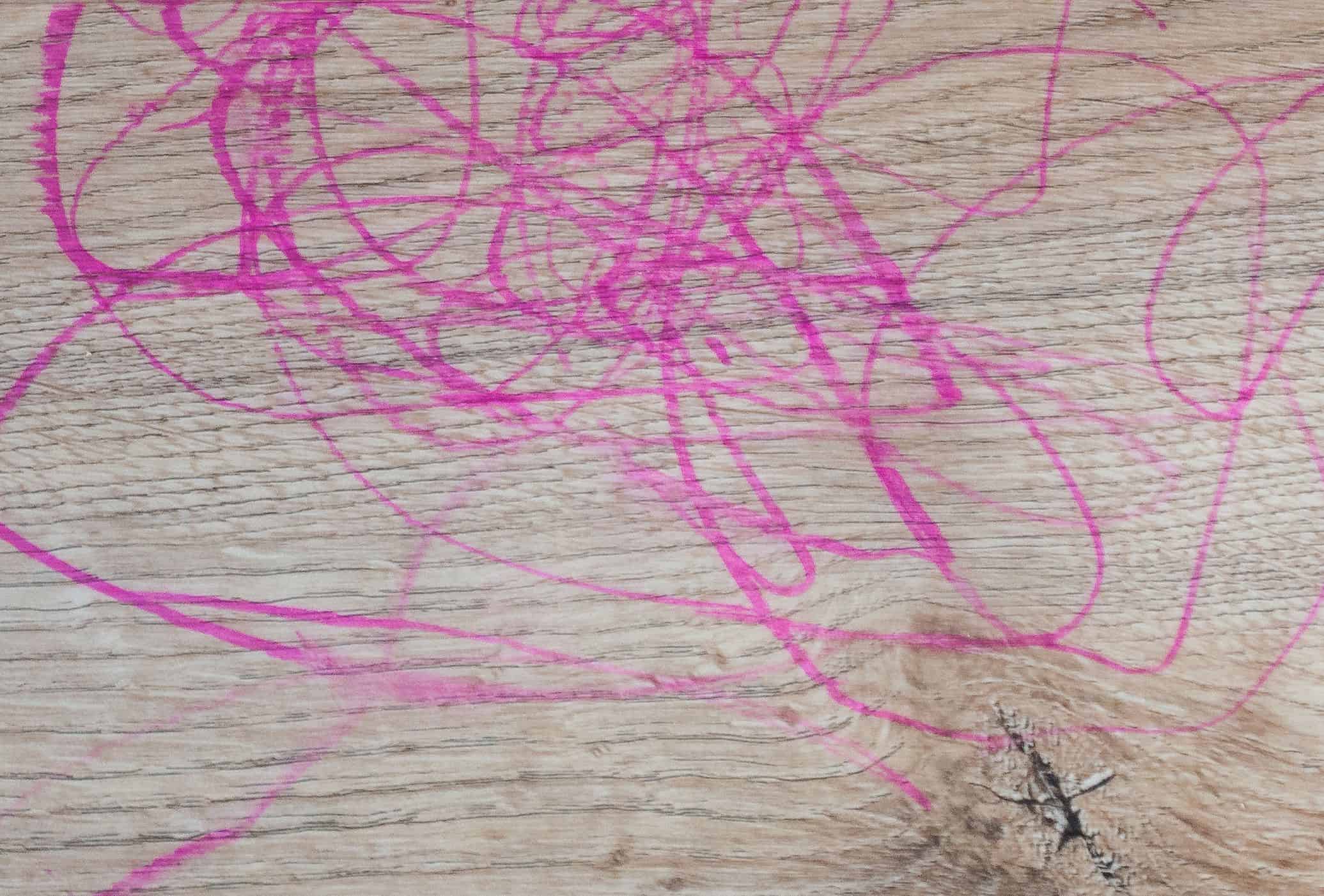
Toothpaste
In this case, a simple tube of toothpaste might just do the trick to help remove permanent marker from wood. Select a regular white toothpaste and avoid those with any abrasive ingredients. Also, avoid the gel-type of toothpaste and the whitening toothpaste options. You can also use rubbing alcohol or even peanut butter instead of toothpaste. This method is also good if you want to know how to get Sharpie off the wood.
- A flat surface is best to work on as the toothpaste will not drip down as you work.
- Squeeze a good amount of toothpaste onto the marked area and make sure that it is all generously covered.
- Soak a clean cloth is some water and squeeze the excess water out – you do not want it dripping everywhere.
- Rub the wet cloth over the toothpaste in circular motions for a few minutes, ensuring that you do not apply too much pressure.
- Rinse out the cloth and then wipe off all the remaining toothpaste, moving in the direction of the wood grain.
- Leave the wood to dry once you have removed all the toothpaste. Hopefully, the mark will be gone!
- If the mark is still there, you could repeat the above steps. However, add a little baking soda to the toothpaste this time, or simply make a paste out of the baking soda.
Rubbing Alcohol
Another affordable option for removing permanent marker is rubbing alcohol. Most of us have some rubbing alcohol (or isopropyl alcohol) at home. Dispense a little onto a clean cloth and gently wipe it over the marked wood surface. Do not rub hard – just dab until you notice the mark lifting off. Then, take a damp cloth and wipe the surface again to remove any residue, after which you must leave the surface to dry. You might need to do this a few times to completely remove the mark, although you must stop immediately if you notice any stain coming off on your cloth.
You can also try out some vodka by using the same steps as above. Make sure that you use a plain vodka without any flavors, as the sugar in these can make things worse.
Acetone or Nail Polish Remover
This method is also quite effective in removing a permanent marker stain. Use a clean cotton rag and dampen it with a little acetone. As with the previous methods, dab the cloth onto the stain, ensuring that you do not rub, as you do not want to damage the wood finish. Remember to always test out the cleaning material on an inconspicuous area of the wood in order to see if the finish will be affected. This way, you will not be making an even bigger mark on your wood surface if things go wrong. You can use a cotton swab when it comes to smaller areas.
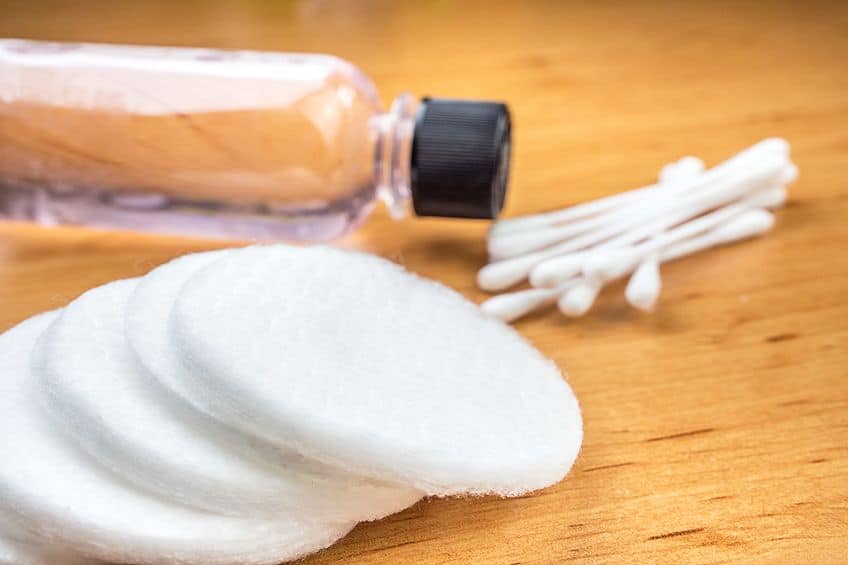
Hairspray
Many of us have this item in our homes, although you may not know that it has more than one purpose. Hairspray can be used to remove permanent marker from wood and also ink stains found on fabric. Simply take your hairspray and spray over the mark on the wood, and then wipe it off with a clean cloth. You should notice the mark coming off straight away. Be sure to remove all the hairspray as soon as possible, as you do not want to damage the wood finish.
You might also consider using hand sanitizer if you do not have any hairspray.
Melamine Foam
This is also known as a “Magic Eraser”, and it can be used on finished wood surfaces to remove permanent markers. The trick is to rub lightly over the mark, as too much pressure can damage the wood finish.
Mayonnaise
You can use mayonnaise in place of baking soda. Simply place a generous amount of mayonnaise onto the mark and rub it in. Then, leave it all for a few minutes and come back to wipe it off with a clean cloth. You can follow the same process again if the mark is still visible. You might also consider using plain vinegar, although mayonnaise is less runny and easier to work with.
Baby Oil
You can try using baby oil if you have nothing else available. Dip a cloth into the baby oil and lightly rub the spot where the mark is located. You can rub in circular movements and reapply until the mark lightens and is removed.
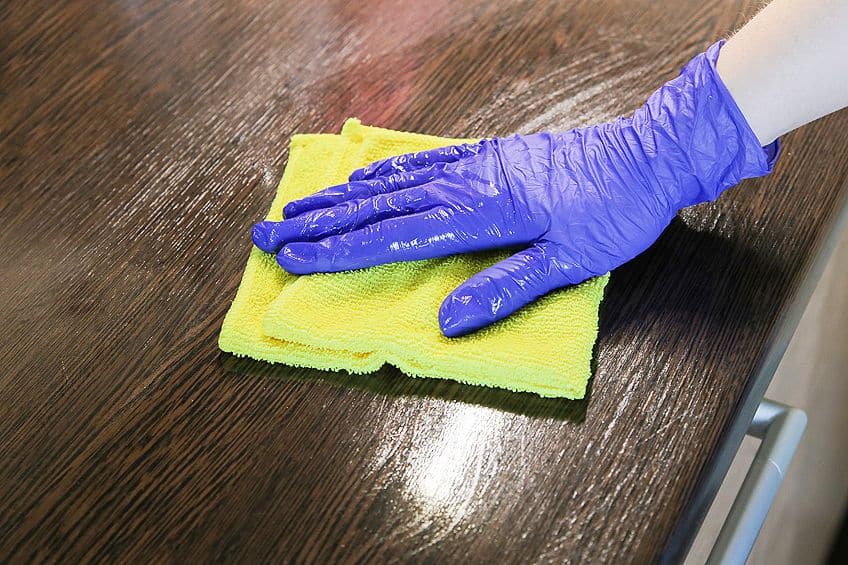
How to Remove Permanent Marker from Unfinished Wood
When trying to remove sharpie from wood that has not been finished with a paint, stain, or varnish, you can try using baby wipes. Rub the area where the mark is, always moving with the wood grain. Baby wipes possess a little alcohol, so they should remove some if not all of the marks. As an alternative, try some rubbing alcohol or hairspray. When applying the hairspray, it is best to first spray some onto a paper towel and then rub it onto the surface, which will help you avoid using too much.
You can then take some 80-grit sandpaper to sand the area, moving with the grain. This should remove any remaining marks, although it will leave sanding marks behind. Thus, you need to follow by lightly sanding the area with finer, 100- to 120-grit sandpaper, which should make the surface appear smoother. Do not sand too forcefully, but instead use lighter strokes in the same direction as the grain.
We then recommend treating the wood with oil or applying a varnish or stain finish. Doing this will help to protect the wood from further damage.
How to Remove Non-Permanent Marker from Wood
You can try removing any non-permanent marks with a cloth soaked in some water if done straight away. Otherwise, get yourself some enzyme cleaner or a mild abrasive cleaner from the store. Baking soda is a mild abrasive, so you can give that a try as well. You will also need some rubbing alcohol and a clean, lint-free cloth.
Once you have everything you need, you can apply the cleaner and allow this to stand for a few minutes. Take the cloth and wet it, squeezing out any excess. Wipe the area using circular movements until the cleaner is gone and the area is clean. If the mark remains, you can try using some rubbing alcohol over the area with a cloth. Clean using a damp cloth and then allow the surface to dry.
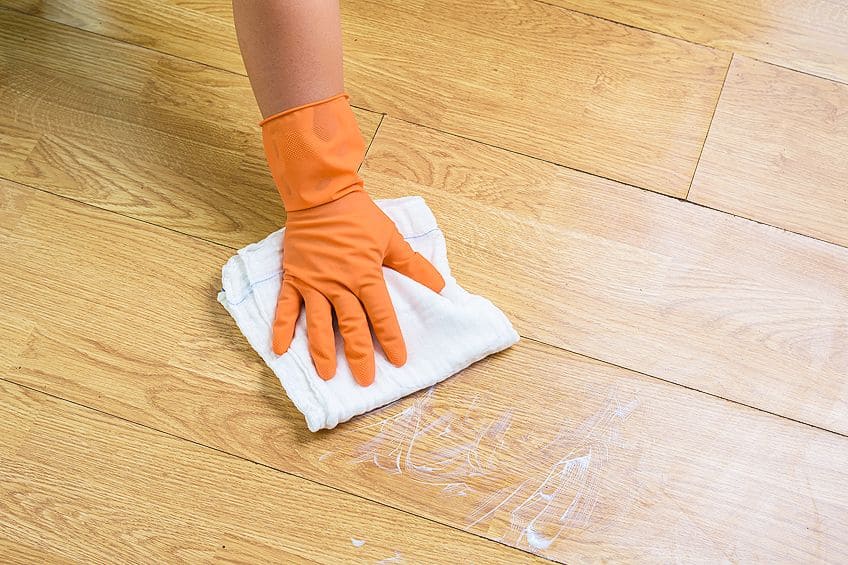
Summary of How to Remove Permanent Marker from Wood
| Method of Removal | Permanent Marker | Non-Permanent Marker | Oil-Based Marker |
| Finished/ Painted Wood | |||
| Toothpaste | ✔ | ✔ | ✘ |
| Baking Soda | ✔ | ✔ | ✘ |
| Rubbing Alcohol | ✔ | ✔ | ✔ |
| Acetone | ✔ | ✔ | ✔ |
| Hairspray | ✔ | ✔ | ✔ |
| Melamine Foam | ✔ | ✘ | ✘ |
| Baby Oil | ✔ | ✘ | ✘ |
| Mayonnaise | ✔ | ✘ | ✘ |
| Unfinished Wood | |||
| Baby Wipes / Rubbing Alcohol / Hairspray | ✔ | ✔ | ✔ |
| Sanding | ✔ | ✔ | ✔ |
Remember, you do not want to use sandpaper on finished wood. If you want to remove permanent marker from finished wood, you will need to be patient as you might have to follow a process more than once to see results. Do not rub, brush, or scrub the surface too hard, but instead use a soft, clean cloth. Always test out your methods on a hidden area of the wood first to ensure that you do not damage the finish.
How to Remove Permanent Marker from Other Surfaces
Permanent markers are usually designed to work on different surfaces, including wood. So, even though you may have intended to use it on a specific surface, it can also somehow land up where you do not want it. Your child may have gotten hold of the marker and expressed their artistic abilities on the wall, the tablecloth, or the cabinet. You will need to figure out how to remove it from these surfaces as well. Let us have a look at a few surfaces where you might need to remove permanent markers.
- Laminated Countertops: You can try applying some vegetable oil and then wiping it off with warm, soapy water.
- Clothing: Try using a little hairspray on the spot before washing.
- Covered Chairs or Couches: Try applying a baking soda paste and scrubbing the area until the mark is removed.
- Walls: Apply lemon juice or lemon oil to the mark, or try a magic eraser and water.
- Leather: Leave a little distilled white vinegar on the mark for a few minutes and then wipe it off.
- Whiteboard: Take a non-permanent whiteboard marker and apply it over the permanent marker. Then clean it with a whiteboard eraser.
- Skin: Make-up remover wipes should do the trick!
- Carpets: Dab the marked area with some acetone or nail polish remover, and then wipe it with a new clean cloth.
- Plastic: Rub off any permanent marker with some hand sanitizer.
- Cabinets: Apply some vegetable oil and then wipe it away with a wet cloth.
- Glass: You can try using some rubbing alcohol or window cleaner.
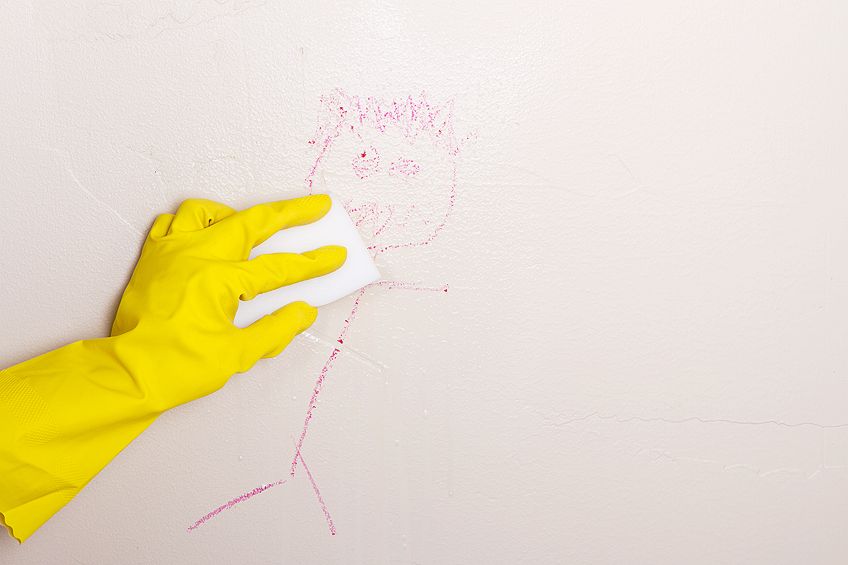
Frequently Asked Questions
How to Get Sharpie off Wood?
The most popular method to remove permanent marker from wood is to use toothpaste. Apply a generous amount to the mark, rub using a circular action, and then wipe it off. The mark should come off, but if not, you can follow the process again until it does.
How Can You Remove Oil-Based Permanent Marker?
You can use rubbing alcohol or acetone to remove sharpie from wood that is oil-based. Take some cotton wool (or a cotton pad) and lightly rub the marked area until the paint is removed.
Will Rubbing Alcohol Remove a Wood Finish?
When using rubbing alcohol to remove a permanent marker, you will need to take special care. Wipe it off immediately and clean the area with a damp cloth. The rubbing alcohol can otherwise damage or dissolve the wood finish, which is why testing out your method first is important.
Is a Sharpie Marker Permanent?
Sharpies mainly come as permanent markers, in both black as well as a variety of colors. The markers offer vibrant permanent colors that can mark a variety of surfaces, including wood.

I have been into woodworking since 2005 and woodturning since 2011. Because of my love for wood and woodworking, I started woodhappen.com to teach other enthusiasts about how to finish and seal wood, the best woodworking tools, the different types of wood, and everything else related to woodworking! Read more about me here.

